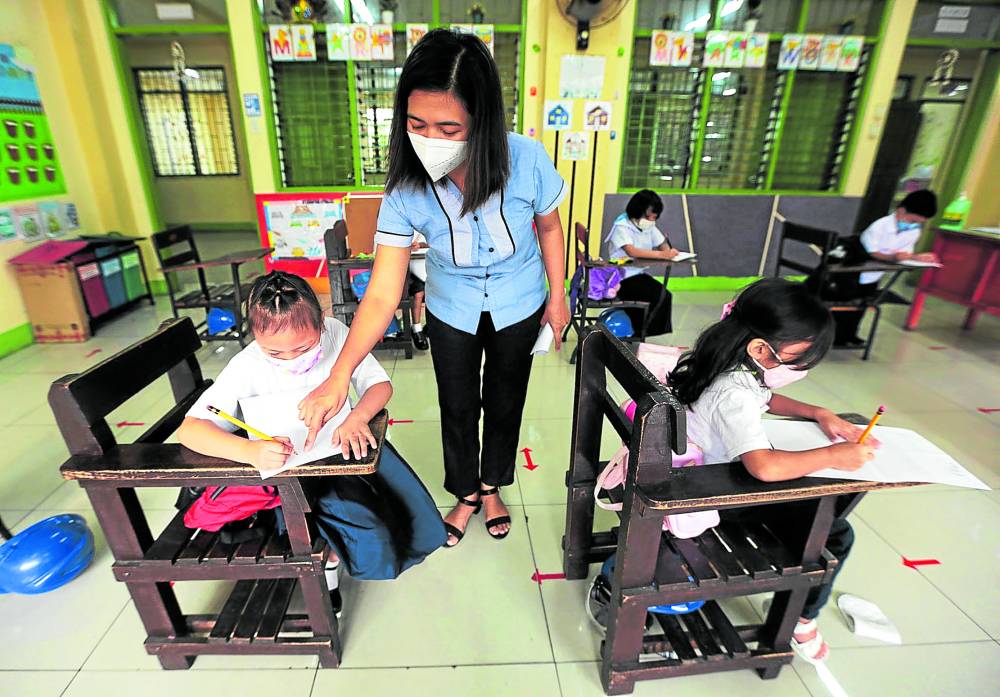
My kids’ school began a hybrid of in-person classes and online distance learning. It’s been bittersweet. We were on a rollercoaster of emotions in the days leading up to it. I recall the weeklong orientation the kids and parents had during home learning last school year. It was leadership training based on Stephen Covey’s book “7 Habits of Highly Effective People.”
It was surprising to see something I read a lifetime ago be resurrected in a child-friendly fashion, with my first and fifth graders filling out a 7 Habits bingo card over the weekend, ticking off things like “take a walk with your family.”
According to the World Economic Forum, to thrive in the 21st century, students need more than traditional academic learning. They must be adept at collaboration, communication and problem-solving, which are some of the skills developed through social and emotional learning.
“Children need to understand and manage emotions, set and achieve positive goals, make responsible decisions, feel and show empathy for others, and establish and maintain positive relationships,” said Janita Andersen, FranklinCovey’s regional lead coach for Asia-Pacific Leader in Me International and higher education director, in a webinar for parents.
As regular classes unfurled, I would hear teachers ask the kids how their task tied into which habit. Andersen said that when we instill habits early in life, we build core character at a young age when they are very thirsty for learning.
In the webinar, she asked what challenges students face today. Parents responded: having a hard time focusing, no physical interaction/socialization and too much screen time.
She said these adverse childhood experiences, traumatic events that occur between 0-17 years old, can impact kids’ health greatly at the time it is experienced and later in life. The World Health Organization called it a public health problem.
In their own words
Andersen admitted skepticism until she saw the 7 Habits at work in a kindergarten in North Carolina and other schools. She showed videos of children explaining the habits in their own words.
Habit 1: Be proactive. How are you going to choose to act today? This empowers kids to take charge and take responsibility. It reminds them that they can make good choices and that they’re in charge of themselves. They can help others and do things without being asked. They can stay organized and responsible, and take the initiative to do what they know is right.
Habit 2: Begin with the end in mind. This is about defining outcomes before you act. Kids are encouraged to have a vision and plan what they’re going to do. Setting goals, working toward them and thinking before speaking are nurtured.
Habit 3: Put first things first. Tackling “big rocks” like homework first and “little rocks” like play later build integrity. Putting on your sock before your shoe shows how you shouldn’t dillydally.
Habit 4: Think win-win. How can we both be happy? Fostering this abundance mentality means thinking of mutual benefits for everyone. When a child believes that everyone is valuable, they will have a spirit and soul committed to service.
Habit 5: Seek first to understand, then to be understood. Empathic listening is stopping long enough to pause and listen first before you say something. Holding back your thoughts is a skill that needs to be developed.
Habit 6: Synergize. It’s no fun to play tag just by yourself. Finding new ways and opportunities boosts creativity. Valuing differences, everyone’s worth and potential leads to creative cooperation. When kids work together, they learn to build on each other’s ideas.
Habit 7: Sharpen the saw. Do what makes your heart happy. Your saw gets dull when you’re too busy to sharpen it, so you’re not effective. When you take care of your body, mind, heart and soul, you enjoy a balanced life. This teaches kids to take time to do something they like: read, watch a movie, exercise or spend time with family.
Practical applications
The kids demonstrated practical applications in their lives. Andersen said, “They learn and then they do. They internalize it in every subject and are given opportunities to practice it even in small ways. It’s real-life stuff that becomes a natural extension and embodiment.”
She advised parents to teach and model the habits at home, to focus on what can be controlled or influenced and to be proactive. She shared tips and examples:
“What can we control? Our positive attitude, turning off the news, finding fun things to do at home, our social distancing, our kindness and grace and limiting social media.”
“We cannot control the actions of others, predicting what will happen, how others react, the amount of toilet paper at the store, how long COVID will last, other people’s motives, if others follow rules of social distancing, so let go of these things.”
Andersen added that when you focus on your circle of control, you get confidence, calm, ability, peace, security, happiness, relief and fulfillment, not stress, anxiety, depression and frustration—by choosing to live intentionally.
When we’re faced with a challenge, our self-talk can be: “’Okay, so in this situation, what can I do? Who can I be?’ How powerful that can be!” she exclaimed.
We often feel stressed, powerless or hopeless when we don’t have control of our lives. Become empowered by listing things in your circle of control, things you have no control over and commit to taking charge by being in your circle of control.
“Use the language. Build the skill and use the tools,” she advised. —CONTRIBUTED








































